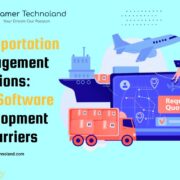Introduction
The Association of Accounting Technicians AAT Level 2 modules serves as a gateway for individuals aspiring to establish a career in accounting. At Future Connect Training, the AAT Level 2 course is meticulously structured to furnish learners with foundational knowledge and practical skills essential for navigating the dynamic realm of accounting. In this comprehensive guide, we will delve into each module covered in AAT Level 2 at Future Connect Training, providing detailed insights into the content, objectives, and addressing frequently asked questions (FAQs) to facilitate a thorough understanding of the course.
Module 1: Bookkeeping Transactions
Content: The inaugural module of AAT Level 2 acquaints learners with the rudimentary principles of bookkeeping. Topics encompassed within this module include the intricacies of double-entry bookkeeping, the classification and recording of various financial transactions, and adept handling of cash and credit transactions.
Objectives: By the culmination of this module, students should proficiently navigate the double-entry bookkeeping system, possess a sound comprehension of Value-Added Tax (VAT) principles, and adeptly prepare and process essential financial documents such as invoices and credit notes.
FAQs:
- What is double-entry bookkeeping, and why is it important? Double-entry bookkeeping is a system that ensures accurate recording of financial transactions by maintaining the fundamental accounting equation: Assets = Liabilities + Equity. It is vital as it provides a systematic approach to record-keeping, enhancing financial transparency and facilitating error detection.
- How do I record cash transactions in the books of accounts? Cash transactions are recorded by debiting or crediting relevant accounts based on the nature of the transaction. For instance, receiving cash is debited to the cash account, while paying cash is credited from the cash account.
- What is the purpose of VAT, and how is it accounted for in bookkeeping? VAT (Value-Added Tax) is a consumption tax levied on goods and services at each stage of production or distribution. In bookkeeping, VAT is accounted for by segregating VAT on sales (output tax) and VAT on purchases (input tax), ensuring compliance with tax regulations.
Module 2: Bookkeeping Controls
Content: Module 2 underscores the significance of internal controls in bookkeeping processes. Learners delve into the intricacies of the banking system, reconcile bank statements proficiently, and master the art of maintaining meticulous petty cash records.
Objectives: Upon culmination of this module, students should adeptly comprehend the principles of internal control mechanisms, reconcile bank statements with precision, and demonstrate proficiency in maintaining accurate petty cash records in adherence to accounting standards.
FAQs:
- Why are internal controls necessary in bookkeeping? Internal controls serve as safeguards to mitigate the risk of errors, fraud, and misappropriation of assets. They ensure the accuracy and reliability of financial information, thereby enhancing organizational integrity and accountability.
- How do I reconcile a bank statement with the cash book? Reconciliation involves comparing transactions recorded in the cash book with those reflected in the bank statement to identify any disparities. Discrepancies are then investigated and rectified to ensure the accuracy of financial records.
- What are the best practices for managing petty cash in a business? Best practices for managing petty cash entail maintaining a designated petty cash fund, implementing strict controls over disbursements, documenting all transactions with receipts, and conducting regular reconciliations to replenish the fund.
Module 3: Elements of Costing
Content: Module 3 delves into the realm of costing within a business context. Learners are introduced to cost classification methodologies, explore diverse cost recording systems, and master the art of calculating unit costs.
Objectives: By the culmination of this module, students should adeptly classify various types of costs, employ suitable methods for recording costs, and proficiently calculate unit costs for products or services.
FAQs:
- What are the different types of costs a business may incur? Business costs can be broadly categorized into direct costs (e.g., materials, labor) and indirect costs (e.g., overhead expenses, administrative costs).
- How do I record costs using the job costing method? Job costing involves attributing costs to specific jobs or projects. Costs are allocated based on the resources consumed by each job, facilitating accurate cost tracking and pricing decisions.
- What is the importance of calculating unit costs for a business? Calculating unit costs enables businesses to ascertain the cost per unit of production, aiding in pricing decisions, budgeting, and assessing profitability.
Module 4: Using Accounting Software
Content: Module 4 acquaints learners with prevalent accounting software utilized in contemporary business environments. Emphasis is placed on setting up company accounts, proficiently recording financial transactions, and generating comprehensive financial reports.
Objectives: Upon completion of this module, students should demonstrate proficiency in utilizing accounting software to execute fundamental accounting tasks, including recording sales and purchases, reconciling accounts, and generating financial reports.
FAQs:
- Which accounting software will I learn to use during this module? The course typically covers popular accounting software such as QuickBooks, Xero, or Sage, providing learners with practical skills applicable in real-world accounting settings.
- How do I set up company accounts in accounting software? Setting up company accounts involves configuring essential parameters such as company details, chart of accounts, and tax settings within the accounting software platform.
- What types of financial reports can I generate using accounting software? Accounting software facilitates the generation of diverse financial reports, including balance sheets, income statements, cash flow statements, and aged receivables/payables reports, empowering businesses with valuable insights into their financial performance.
Module 5: Work Effectively in Finance
Content: Module 5 encompasses essential skills requisite for thriving in a finance-oriented role. Learners hone their communication skills, refine time management techniques, and gain insight into the organizational structure and functioning of finance departments.
Objectives: By the culmination of this module, students should possess exemplary communication skills, exhibit adept time management capabilities, grasp the nuances of finance department operations, and thrive in collaborative team environments.
FAQs:
- Why are communication skills important in a finance role? Communication skills are imperative in finance roles for articulating complex financial information effectively, fostering stakeholder relationships, and facilitating seamless collaboration across departments.
- How can I improve my time management skills? Time management skills can be enhanced through effective prioritization, setting realistic goals and deadlines, utilizing productivity tools, and practicing self-discipline in task execution.
- What is the typical structure of a finance department within an organization? Finance departments typically comprise distinct units such as accounting, treasury, financial planning and analysis (FP&A), and internal audit, each entrusted with specific responsibilities to ensure financial stability and compliance within the organization.
Conclusion
The AAT Level 2 qualification offered at Future Connect Training serves as a foundational stepping stone for individuals embarking on a rewarding career in accounting. Through a meticulously crafted curriculum encompassing modules on bookkeeping, costing, accounting software proficiency, and finance skills, students acquire a robust skill set poised to meet the demands of the dynamic accounting landscape. By addressing pertinent FAQs, this guide endeavors to elucidate and demystify the intricacies












